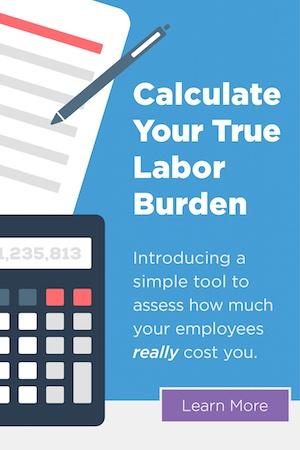The Affordable Care Act (ACA) has certain changes to some requirements that take effect in 2018.
As an employer it is important for you to know how you are defined by ACA to determine if the changes affect you.
Is Your Plan Grandfathered?
Grandfathered plans are those in existence before ACA was enacted March 23, 2010.
- Grandfathered plans are exempt from some of the ACA mandates, and are allowed certain changes within the permitted guidelines without jeopardizing their grandfathered status.
- There is no time limit on grandfathered plans. The grandfathered status remains in effect so long as no prohibited changes are made. Once the status is revoked, it cannot be reinstated, and plans must comply with the full gamut of ACA requirements.
- If your plan will maintain its grandfathered status in 2018, continue to provide the Notice of Grandfathered Status in any plan materials provided to participants.
If Your Plan is Not Grandfathered:
Non-grandfathered health benefit plans with plan years beginning on, or after January 1, 2018 are subject to limits on cost sharing (out-of-pocket maximum) for essential health benefits (EHB).
- Limit of $7,350 out-of-pocket maximum for individual coverage
- Limit of $14,700 out-of-pocket maximum for family coverage
- The health plan maximum out-of-pocket may be divided among multiple service providers, so long as the combined total does not exceed the limits referenced above. For example, if the maximum out-of-pocket for individual major medical coverage is $5,000 and pharmaceutical coverage is $2,350, the total does not exceed the ACA standard of $7,350.
For plan years beginning on, or after January 1, 2016, slightly different cost-sharing guidelines apply:
- The individual coverage out-of-pocket maximum of $7,350 applies to each participant, regardless of self-only coverage or family coverage.
- This means that if a participant with family coverage reaches the $7,350 out-of-pocket maximum, that individual’s Essential Health Benefit expenses in excess of $7,350 will be covered at 100%, regardless of whether the entire $14,700 family out-of-pocket maximum has been met.
- ACA refers to this as “embedded” cost-sharing.
High Deductible Health Plans (HDHPs) that are compatible with Health Savings Accounts (HSAs) must have out-of-pocket maximums that are lower that the ACA limit. For 2018, HDHPs have an out-of-pocket maximum of $6,650 for self-only coverage, and $13,300 for family coverage.
Are You an ALE?
ALEs or Applicable Large Employers are defined as employers with 50 or more full-time employees, including full-time equivalent employees, or FTEs, on business days during the preceding calendar year. ALEs must determine which employees are full-time:
- A full-time employee is employed, on average, at least 30 hours of service per week, or 130 hours for the calendar month.
- Health coverage must be offered to full-time employees under the employer shared responsibility definition.
ALEs can be penalized under the employer shared responsibility rules 4980H(a) penalty or 4980H(b) penalty.
- If at least one full-time employee receives a subsidy for coverage purchased through an Exchange, the ALE may be liable for a penalty.
- Employees who are offered affordable coverage that provides minimum value are generally not eligible for Exchange subsidies.
- 4980H(a) requires ALEs to offer minimum essential coverage to “substantially all” of its full-time employees and their dependents.
- If 5% or, if greater, five full-time employees, are not offered benefits, penalties may apply.
- For 2017 the penalty is $2,260.
- 4980H(b) penalizes ALEs that may meet the “substantially all” full-time employee requirement if at least one full-time employee obtains a subsidy through an Exchange because:
- The ALE did not offer coverage to all full-time employees; or
- The ALE’s coverage is unaffordable or does not provide minimum value
- For 2017, the penalty is $3,390
- ALE’s health coverage is considered affordable if the required contribution for an employee does not exceed 9.5% of the employee’s household income for the taxable year. For 2018, the percentage is 9.56%
- A plan provides “minimum value” if the plan’s share of total allowed costs of benefits provided under the plan is at least 60% of those costs. Any plan that does not provide inpatient hospitalization or physician services does not provide minimum value.
The new rules and guidelines referenced above are a glimpse of the ACA changes for 2018. UniqueHR ensures that our benefit plans are in compliance with ACA rules, so our clients can focus on growing their business. In fact, businesses that partner with a PEO like UniqueHR tend to grow 7-9% faster than those without a PEO relationship. Contact UniqueHR today to see how we can help you focus on growing your business.


